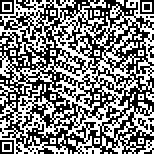| 摘要: |
| 本文选取8 种常用的遥感图像监督分类方法, 综合利用多数投票方法与先验分类概率信息, 设计了3 组决策级融合分类策略, 在应用地物丰富的黄河口湿地CHRIS 高光谱图像数据进行分类实验的基础上, 开展了不同融合策略决策分类结果的比较研究, 分析了融合策略对高光谱图像总体分类精度以及不同地物分类精度的影响。结果表明: (1)3 组决策级融合策略总体分类精度均大于85%, Kappa 系数都优于0.77, 较8 种单分类器均有提高, 表明决策级融合是利用已有分类器资源、提升高光谱图像分类精度的一种途径; (2)策略3 的分类表现最好, 即维持最小虚警率的前提下降低错分可以提高分类精度, 其中芦苇、滩涂地物同时保持了很高的生产者精度和用户精度, 均接近90%, 水体在保持较高用户精度的情形下生产者精度有大幅提升, 增幅达11%; (3)每组策略综合考虑生产者精度和用户精度的情形下分类精度最高, 较仅考虑生产者精度或用户精度的情形提升了1~2 个百分点, 表明设计算法时应同时考虑减少错分和漏分的情况。 |
| 关键词: 图像分类 CHRIS 决策级数据融合 |
| DOI:10.11759/hykx20141011006 |
| 分类号: |
| 基金项目:国家自然科学基金项目(41206172); 中欧国际合作龙计划项目(ID: 10470) |
|
| Research on decision-level data fusion classification method for CHRIS hyperspectral imagery |
|
|
| Abstract: |
| In this paper, three groups of strategies of decision-level data fusion classification are designed using eight classical remote sensing image supervised classification algorithms and the dint of vote method and priori classification probability information. On the base of classification experiment of CHRIS hyperspectral image locating in Yellow River Estuary wetland, the influence on the overall accuracy or the accuracy of each object with different decision-level data fusion classification algorithm for hyperspectral image are analyzed, and the main conclusions are given below: (1) All the overall accuracies and Kappa coefficients of three groups strategies of decision-level data fusion classification are greater than 85% and 0.77, respectively, and they are superior to eight classical supervised classifiers. It shows that decision-level data fusion is an effective method for improving hyperspectral image classification accuracy base on the existing resources of classifier. (2) Classification accuracy of strategy III has the best performance, and the producer accuracy and user accuracy of phragmites austrialis and tidal flat are both close to 90%, while those of water are improved significantly with an increase of 11%. It indicates that reducing commission error can improve classification accuracy in maintaining minimum false alarm rate. (3) For all strategies of decision-level data fusion classification, the classification accuracy is maximal in the case of considering producer accuracy and user accuracy simultaneously. Compared with the cases of considering producer or user accuracy only, the overall accuracies increase 1%~2%. It shows that reducing commission error and omission error should be emphasized all together when the decision-level data fusion algorithm is designed. |
| Key words: image classification CHRIS decision-level data fusion |
